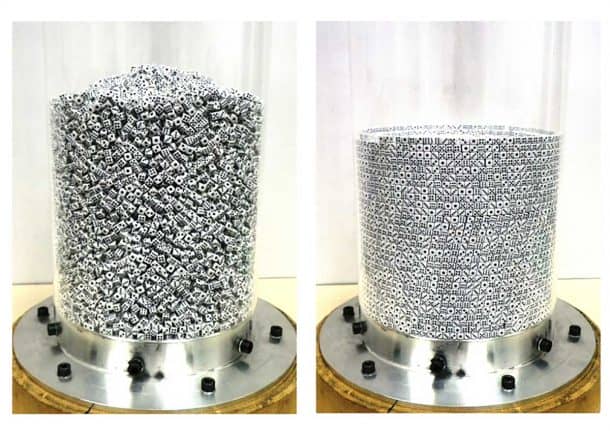Scientists have tested the compact dynamics on non-spherical objects. The applications of these tests could be applied to space travel. Seeing these dices organize themselves through compaction dynamics is a fascinating sight. It will take you back to the early days of your physics courses. Compaction dynamics can have an interesting effect on granular materials like snow, nuts, coal, sand, rice or coffee grains. Compaction dynamics comes in hand where granular materials have commercial importance. For example, the pharmaceutical industry, agriculture industry, and energy production industry.
Granular materials are usually closer to the spherical objects. Curious about what would happen to a granular material that consisted of cubes, a group of physicists from Mexico and Spain decided to use the object that is part of almost every board game, a dice. They took 25,000 dice to be exact. The dice were standard in size and half a centimeter wide on each side.
To begin the experiment, the scientists poured 25,000 dice into a translucent cylinder. The cylinder was 8.7cm wide and was twisted back and forth per second. As the cylinder was twisting, the dice began to pack closer together through each twist. Instead of moving chaotically like other particles, dice came together and were settling systematically.

The dice positioned into tidy concentric rings after approximately 300,000 twists. To push the experiment even further the scientists tested various velocities and intensities. With that, they discovered that as the cylinder was moving faster, the dice were falling into place more quickly. On the other hand, if you move the cylinder slowly, the dice will fall into place very late. The flat surfaces on the dice align with each other because of the force generated as the twists pushes them outwards to the edge of the cylinder.
The team working on the experiment writes, “Under this agitation, the development of shear forces among different layers of cubes leads to particle alignment. If the intensity of the excitations is sufficiently large, an ordered final state is reached where the volume fraction is the densest possible compatible with the boundary condition.”
The experiment was a great move towards working with materials in places where gravity assist will not work from tapping a container. After this phenomenon was observed in the experiment, the Mexican and Spanish teams are preparing to test other granular materials as well. The team will be completing the next experiments on International Space Station aiming to study how microgravity will impact granular materials.


